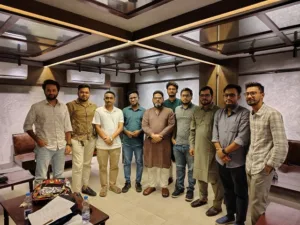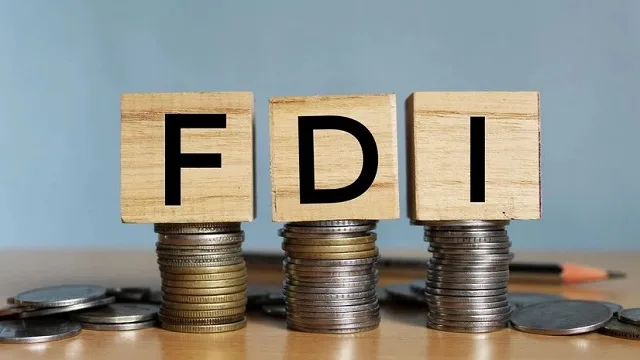Introduction
Bangladesh’s $35 billion garment and textile industry has been the backbone of our economy for decades, contributing more than 85% of total exports. But today, the industry stands at a crossroads. Global shifts, rising costs, automation, and political uncertainty have exposed its vulnerabilities. To secure our future, one answer stands clear: foreign direct investment (FDI) through joint ventures (JVs).
Why FDI JVs Matter Now
The pandemic proved that governments cannot carry the burden of every industry alone. Even garments—our economic lifeline—must reinvent themselves to remain competitive. Yet, foreign investment in this sector has remained weak. In fact, in 2018 FDI into the textile sector even dropped compared to the year before, while other sectors saw growth.
Local investors alone cannot provide the level of modernization, value addition, and resilience the industry needs. Political changes after August 5, 2025 have created fresh uncertainty, with projects stalling and even collapsing. Take the example of Beximco NASA—massive projects folded under political and financial pressure.
Now compare this with EPZ-based ventures, from Youngone in the late 1980s to YKK and AK Khan Penfabric Company. For 30–40 years, these FDI-backed ventures have run smoothly with fewer disruptions, stronger compliance, and greater stability. This proves that FDI JVs create more security for both capital and employment.
Also Read: Circular Economy: A Path Back to Earth’s Original Beauty
The Green Factory Dilemma
Bangladesh has become the global leader in green garment factories, with over 95% of them locally owned. In 2024 alone, exports worth USD 38 billion were driven overwhelmingly by Bangladeshi entrepreneurs. Owners have invested directly in LEED-certified infrastructure, water efficiency, and energy-saving systems, making Bangladesh home to the largest number of green factories in the world.
This achievement is a source of pride—but it hides a harsh truth.
• Factory owners admit they are not getting fair prices for their massive investments.
• Production costs keep rising, but buyers are unwilling to pay more.
• Global competition is intensifying, especially with new suppliers entering the market.
At the same time, the fashion industry is undergoing a historic transformation—towards sustainability, circular economy, and new business models. This transition will take at least a decade to stabilize, while customer behavior is already shifting unpredictably.
Without FDI-backed partnerships to bring in technology, design expertise, and global market access, Bangladesh’s green factories risk becoming stranded assets.
Bangladesh’s Unique Burden
Unlike many countries, Bangladesh’s garment boom has been self-financed by local entrepreneurs. For over four decades, owners have poured private capital into compliance, worker welfare, and infrastructure. This independence is admirable but risky.
• Political instability, sudden policy changes, and unplanned loans repeatedly disrupt the industry.
• Without fair pricing from global buyers, survival becomes even harder.
This is why FDI JVs are essential—not to replace local ownership, but to share the risks and bring stability, technology, and global credibility.
Also Read: 5 Key Reasons Foreign Apparel Brands Choose Bangladesh for Sourcing
Where FDI Is Needed Most
FDI must go beyond basic manufacturing. Priority areas include:
• Non-cotton fibers and advanced textiles – to reduce import dependence.
• Design houses, R&D, and circular economy – for higher-value products.
• Digital tools and automation – to prepare for Industry 4.0.
• Education and skills – linking textile engineering colleges with foreign universities and global investors.
If Bangladesh does not act, Africa—with its cotton-growing advantage and rising FDI inflows—will capture the investments we are losing.
Lessons from Success and Struggles
The track record of foreign direct investment (FDI) and joint ventures (JVs) in Bangladesh’s garment sector offers valuable guidance for the future. Long-standing enterprises like Youngone, YKK, and AK Khan Penfabric Company have operated successfully for decades within Export Processing Zones (EPZs). Their consistent stability, strong compliance, and uninterrupted growth demonstrate how international partnerships can shield businesses from political shifts and financial turbulence.
More recently, the Japanese investment in Beximco stands as a positive signal for the sector. This collaboration reflects renewed foreign confidence in Bangladesh’s textile and apparel market, proving that well-structured JVs can attract high-quality investors even amid global economic uncertainty. These examples highlight that with the right policies and transparent partnerships, FDI-backed ventures can create long-term security, technology transfer, and market expansion for the industry.
The Data: FDI in Bangladesh Textiles (2010–2025)
• In 2010–2015, FDI inflows into textiles were small, averaging USD 150–250 million annually.
• By 2020, the sector attracted ~USD 271 million, an 11% increase from 2019.
• In FY 2022–23, textiles received the highest FDI of any sector—USD 1,229 million.
• In Q1 2025 alone, net FDI doubled year-on-year to USD 864.63 million.
Top FDI countries in Bangladesh textiles (2023–2025):
1. South Korea – ~USD 435 million (largest single investor)
2. Hong Kong – ~USD 174 million
3. China – ~USD 112 million
4. India – ~USD 54 million
(Overall FDI stock also shows strong shares from the UK, Singapore, Netherlands, USA.)
This confirms: South Korea has been the most consistent and largest FDI partner in Bangladesh’s textile industry.
Role of Industry and Government
To attract more JVs, industry associations (BGMEA, BKMEA, BTMA) must work with global funders like ADB, IFC, World Bank, ILO and bring forward concrete JV proposals.
The government should:
• Guarantee fair returns for foreign investors.
• Reduce energy costs through renewable solutions.
• Link new project approvals to FDI participation.
The Trade War Opportunity
The ongoing U.S.–China trade war has pushed investors to relocate capital. Bangladesh can capture this if it ensures political stability and offers strong JV models.
Final Word
For too long, Bangladeshi entrepreneurs have shouldered the weight of compliance, worker welfare, and infrastructure without fair returns. Now is the time to open the doors wider to FDI JVs.
I would like to emphasize that if any entrepreneur wants to make an expansion or start a big project, they should choose JV as the best pathway toward sustainable business—where technical expertise and marketing equity are shared equally between partners. This approach not only minimizes risks but also creates a balanced ecosystem for growth and competitiveness in the global market.
Bangladesh’s garment and textile industry has proven resilience time and again. Now, at this crucial juncture, we must welcome more joint ventures that combine global knowledge with local strength to safeguard our future.
About the Author
Md. Salauddin is Director of Reaz Garments Ltd, while also serving as an advisor to the Textiles and Garments Merchandise Blog Bunon, he actively contributes insights on sustainability, sourcing, and industry transformation.

He carries forward a remarkable legacy: his father, Mohammad Reazuddin, founder of Reaz Garments, is widely recognized as one of Bangladesh’s first ready-made garment exporters. In 1978, Reaz Garments shipped 10,000 shirts to France, a milestone that helped lay the foundation of Bangladesh’s RMG industry.
Building on this pioneering heritage, Salauddin combines deep industry knowledge with a commitment to innovation, knowledge sharing, and global competitiveness for Bangladesh’s apparel










This is a really thoughtful article. I feel our entrepreneurs need to move past the conventional factory mindset and focus more on innovative projects if we want to attract stronger FDI JVs. Giving part-time opportunities to university students could also bring in fresh ideas and new ways of thinking that add value to the industry. Along with that, better collaboration between industry and academia and a stable policy environment can help build real confidence among global investors.